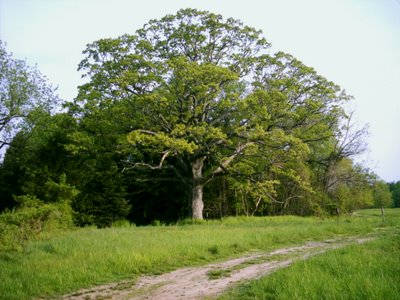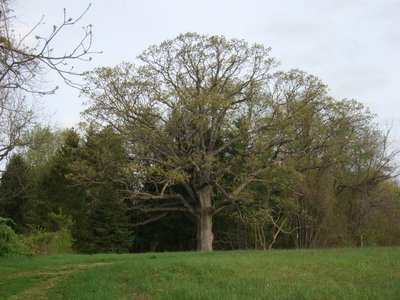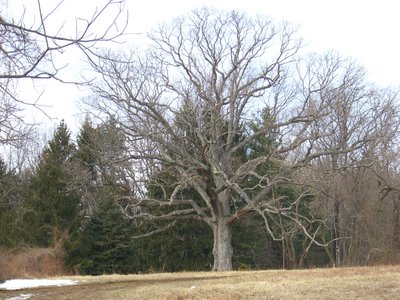Philadelphia Marathon - The Half
I have run the Philadelphia Marathon every year but one since 1998 but
this year decided to take advantage of the new Half Marathon. I am
glad I did.
The marathon is newly sponsored by American Express. It was
interesting to note the changes; most of them not for the better but
more on that later.
If you are running a marathon for location Philly is one of the great
courses (with the proviso that not everyone enjoys doing the out and
back on Kelly Drive).
When I heard that the field was 12,000 I had assumed that there were a
majority of half marathoners, but I later learned that they had capped
the field to 2,000 since it was new and they wanted to see how it
worked.
Got to Mantua where I usually park about 6:45. In past years it was
easy to park there but a combination of marathoners knowing to go
there and neighborhood redevelopment make parking tough. I did manage
to squeeze into a spot about where I wanted to be.
At Eakins Oval I found some friends, talked race strategy, did my
pre-race rituals, and then went to drop off my baggage. This has
always been easy and well managed but this year it was a mess. Huge
long line with two kids trying to take bags. Later I learned that we
were suppose to drop out bags at designated points along the curb but
no one told us and there were no signs. Since I was a half runner and
finished with a decent time I had no trouble picking up my bag but it
must have been a mess when the crowds got there. Interesting thing –
when I was walking around after the race with my bag at least a half
dozen people came up to me looking for the baggage tent. Strange, but
maybe they had someone drop their stuff and didn't know where to go.
For some reason they had moved the tent from where it had been the
last three years.
But on to the race. Got into the crowd at the just below the eight
minute pace sign. And stood near the 3:50 pace group. I was planning
on running 1:50 and figure I could pace on that group for awhile. Met
an old running friend who was planning on a 3:50 finish (and he ran
3:48) and we chatted as the clock ticked pass 8AM and no start. No
sound system so we had no idea what was going on. But suddenly
without fanfare we were moving forward and to my surprise, considering
how packed in we were, we were running fairly well. I say fairly
because the first mile was a little slow – about nine minutes.
But from then on the pace was good. I kept the 3:50 pacer in sight
but ran as I wanted. As usually happens in big races without corrals
a lot of people ahead had not seeded themselves correctly and I had to
waste some energy in passing – I tried to minimize it but sometimes I
was boxed in and was so off pace I had to try to move to an open spot.
(It was kind of like being on the expressway. I would draft off the
3:50 pacer and someone would move in front of me and then inexplicably
slow down.)
The course starts on the Parkway, moves onto Arch and then Race. Both
of those streets are relatively narrow but finally you move onto
Delaware Avenue and you get some running room. However, we get to
mile 3 and whoa – my split shows 9:15. Something is clearly wrong.
It was interesting how a ripple of murmuring spread across the field
as those keeping track of splits realized something is off. Meanwhile
the 3:50 pace takes off and a couple of people say what the heck is
going on. I counsel a couple of people I've been running with to hold
steady. I am not a great pacer but I knew I didn't fall off 45
seconds. I hold steady with maybe a little pickup. Get to mile four
and my watch reads 6:40 – this would be a near pr for a mile let alone
four miles. The markers were obviously off.
We're down South Street then up Sixth to Chestnut – there seems to be
more spectators than in past years and they are pretty vocal.
When we get to 34th and move toward the Zoo and Fairmount Park there
is a pretty good hill. The hype for the race is how flat the course
is – I guess the race director forgot about 34th. Flat and furious
and other lies Race Directors tell.
We are into Fairmont Park and then climbing the hill to Memorial Hall.
There is always a sign posted Last Hill. I hope the first timers
don't really believe it. I am feeling excited. I know mile ten is
just ahead and I feel great. The course has been adjusted and mile
ten has moved from in front of Memorial Hall to Belmont Ave. I
realize that I have caught up with the 3:50 group.
This is where they split the Marathoners from the Halves. We take a
short cut right to the Japanese Tea House cutting a mile off the
course. When we merge back with the marathoners I figure we are now
with marathoners who want to run about 3:45 or better. I figure they
will be going faster than me but surprisingly I am passing large
numbers of runners. There is a steep drop to Martin Luther King
Drive. In the past I have tried to be cautious here so as not to over
run my pace but I have less then three miles so I push hard down the
hill.
BTW at the split is where I have another problem with the race
organization. The race you were running was indicated by you bib
color. Marathoners were blue; halves were pink. So you would think
the mile markers would use the same nomenclature. They didn't – it
was backward the half marathon marks were blue; the marathon mile
marks pink. It caused no end of confusion among the runners. Some
hit the splits and then realize it was wrong. Definitely should have
been made clearer.
I am running very well – no cramps, no fatigue. I am at the Art
Museum in what seems no time. The finish is slightly up hill but I
know I am done. The finish is a little surprise (but on reflection
how else could they have done it). You must make a tight corkscrew to
get into the finish chute. So much for a dramatic racing finish.
Writing this now I wonder what happened as the race progressed and
slow half marathoners mingled fast marathoners. How did they manage
the finish especially for the top male and female? Hmm?
After the race I quickly picked up my bag and went to get some
goodies. The food area was completely without volunteers. It wasn't
clear where you should enter. And they had bananas, apples, pretzels.
Now maybe it was because I was early. Maybe they got organized by
the time marathoners got there but still… when I pay such high entry
fees is it unreasonable to expect a little variety – and what happen
to the chicken soup. Every Philly marathon I have done had chicken
soup at the end.
Anyway . . . I walked down about a quarter mile, saw some Bryn Mawr
people and watched the elites come in. Michael McKeeman who trains
with Deena Kastor and who gave a talk at the Bryn Running Club annual
meeting came in second with a personal pr. The night he spoke someone
asked about his goals and he said to win the Philadelphia Marathon.
He ran a very smart race moving up in the last miles from seventh to
second. Another goal was to qualify for the Olympic trials and that
he has done. Bob Schwelm owner of the Bryn Mawr Running Company and
life force of the Bryn Mawr Running Club came in at 47 yrs, 21st
overall and 1st in his age group in a very respectable 2:33. Mike
Patterson that I trained with for so many years and Diane still trains
with came in third in his age group (53) at 2:55.
I had only planned on staying for awhile but actually ending up
cheering until the four hour runners came by. Fascinating watching
the runners come by in every shape, size and running style imaginable.
Some smiling, some in real distress. A runner went down directly in
front of us and had to be ambulanced out. A woman went down and
looked finished then got up and began walking to the finish – she got
quite of road of approval.
I now appreciate more than ever the effort and stamina my wife and
daughter have shown when they have waited for me at marathons' end.
And I also realize how very difficult it is to pick out runners as
they go by. I missed several runners I was looking for especially as
the four hour runners went by.
Lots of cramped runners even on this cool day showing hydration and
electrolyte replacement is key to success.
As for me I missed my goal 1:50 and finished 1:51:09. 16th in my age
group (but I would have been second if I was 60). I will have to go
back and look at my splits to see what happened but I think the slow
start and hitting each split a few seconds slower then optimal was
enough. Overall though a very good race for me. Oh and I noted that
the two runners in my age group ahead of me actually ran slower chip
times but were ranked based on gun time. I may have started too far
back (on the other hand a slower start may have been why I felt so
good at the end.)
Last race in this age group - next race I will 60. Yeah.
Thursday, November 30, 2006
Friday, November 17, 2006
Trees
"Nearly every morning I go to the attic to blow the stuffy air out of my lungs, from my favorite spot on the floor I look up at the blue sky and the bare chestnut tree, on whose branches little raindrops shine, appearing like silver, and at the seagulls and other birds as they glide on the wind...."
"Our chestnut tree is in full blossom. It is covered with leaves and is even more beautiful than last year...."
Anne Frank
As you may have read, Anne Frank’s chestnut tree will be cut down because of disease. It was about a hundred and fifty years old.
Last year a dead runner shared with a time lapse movie he had complied from a series of photos taken over a years time.
Inspired by that, for the last year, every week I have taken a photograph of a tree on the grounds of Tyler Arboretum. I carried my camera on every Friday trail run and no matter what path I took I made sure I passed the tree. When I knew I was going to be away or for some other reason couldn’t run on Friday I would hike in as close to the day as I could. I even walked thru a couple of feet of snow to get to the tree.
Two weeks ago I had a very nice run in near peak fall foliage. My tree, an oak, never displayed much color my I was anxious to see how it looked. My normal approach is down a wooded path then out onto a field (the same field where I saw the fox kits last spring). The path runs between the woods and the field gradually climbing and curving.
As soon as I came out into the open I sensed something was awry. Normally, I could momentarily see the top of my tree before it was hidden by turn of the trail. But not that day. A little further on I could see the tree still in full leaf but it was obvious that something was very wrong. It was lying low to the ground – Iwas seeing the top of the tree. I hurried forward and my worst fears were confirmed. The tree was down – cracked and splintered at the base. I couldn’t believeit; it had never looked unhealthy. But I could see the rot deep inside. I walked all around it wanting not to be so.
Later in the week I spoke to a volunteer at the Arboretum. She said a neighbor had been working in her yard and heard the tree groaning and creaking. There was not a great wind but suddenly the tree toppled. They believe the tree was more than a hundred years old. They have posted a sign asking that no one cut anything from the tree – they hope to save the wood for a project in Arboretum.
The lost of the great trees always saddens me even though I know it is part a nature’s course. Anne’s tree has been saved in a small way. Cuttings were made and a stripling will be planted, but, of course, many years will past before it is a great tree.
That is the way with trees: they are likely to long outlive us seemingly unchanging, but when gone they leave a gap not easily filled.
My tree is gone and there is probably no cutting to replace it, but the Arboretum mindful of its legacy has been planting trees this year. Encased in plastic to protect them from deer they aren’t much to look at now but hopefully in a hundred years they will awe some hiker even as I was awed by my oak.
"Nearly every morning I go to the attic to blow the stuffy air out of my lungs, from my favorite spot on the floor I look up at the blue sky and the bare chestnut tree, on whose branches little raindrops shine, appearing like silver, and at the seagulls and other birds as they glide on the wind...."
"Our chestnut tree is in full blossom. It is covered with leaves and is even more beautiful than last year...."
Anne Frank
As you may have read, Anne Frank’s chestnut tree will be cut down because of disease. It was about a hundred and fifty years old.
Last year a dead runner shared with a time lapse movie he had complied from a series of photos taken over a years time.
Inspired by that, for the last year, every week I have taken a photograph of a tree on the grounds of Tyler Arboretum. I carried my camera on every Friday trail run and no matter what path I took I made sure I passed the tree. When I knew I was going to be away or for some other reason couldn’t run on Friday I would hike in as close to the day as I could. I even walked thru a couple of feet of snow to get to the tree.
Two weeks ago I had a very nice run in near peak fall foliage. My tree, an oak, never displayed much color my I was anxious to see how it looked. My normal approach is down a wooded path then out onto a field (the same field where I saw the fox kits last spring). The path runs between the woods and the field gradually climbing and curving.
As soon as I came out into the open I sensed something was awry. Normally, I could momentarily see the top of my tree before it was hidden by turn of the trail. But not that day. A little further on I could see the tree still in full leaf but it was obvious that something was very wrong. It was lying low to the ground – Iwas seeing the top of the tree. I hurried forward and my worst fears were confirmed. The tree was down – cracked and splintered at the base. I couldn’t believeit; it had never looked unhealthy. But I could see the rot deep inside. I walked all around it wanting not to be so.
Later in the week I spoke to a volunteer at the Arboretum. She said a neighbor had been working in her yard and heard the tree groaning and creaking. There was not a great wind but suddenly the tree toppled. They believe the tree was more than a hundred years old. They have posted a sign asking that no one cut anything from the tree – they hope to save the wood for a project in Arboretum.
The lost of the great trees always saddens me even though I know it is part a nature’s course. Anne’s tree has been saved in a small way. Cuttings were made and a stripling will be planted, but, of course, many years will past before it is a great tree.
That is the way with trees: they are likely to long outlive us seemingly unchanging, but when gone they leave a gap not easily filled.
My tree is gone and there is probably no cutting to replace it, but the Arboretum mindful of its legacy has been planting trees this year. Encased in plastic to protect them from deer they aren’t much to look at now but hopefully in a hundred years they will awe some hiker even as I was awed by my oak.
Subscribe to:
Posts (Atom)







